Looking at the challenges in the next ten years from the development history of Chinese churches in the United States
Exclusive interview with Pastor Su Wenfeng, Director General of Overseas Campuses
Interview/Yu Guoliang, Zhang Lingxi
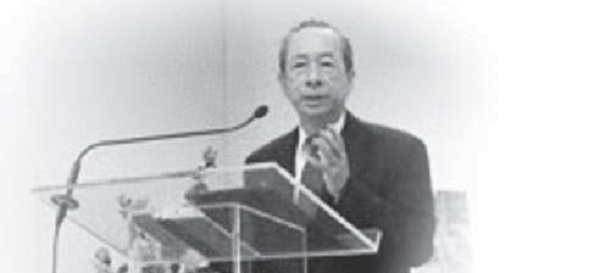
The first Chinese-American Mission Conference hosted by the Association of Christian Messengers was held in San Diego, California from December 27 to 30, 2011. Rev. Su Wenfeng, Director General of Overseas Campuses, was invited to give a speech titled "Era, Mission, and Foresight" at the conference. Although there were more than 1,400 attendees that day, I believe that readers of Kingdom of God magazine will be very interested in the review of the development of the Chinese church in the United States and the challenges ahead. Therefore, I made a special trip to visit Pastor Su and listen to his thoughtful words. share.
Question: Before talking about the development and history of the Chinese church in the United States, please briefly describe the history of missionary work for us.
answer:Anyone who cares about the development of the church cannot deny that missionary work actually began with the early church. Since the church was established on Pentecost, it immediately preached the gospel to the outside world. At first it was personal work, such as Philip going to Samaria and Peter and John going to Caesarea. In Acts 13, we read that the church in Antioch sent Paul and Barnabas to preach the gospel. They originally preached in Asia. Later, when Paul heard the call from Macedonia, he came to the Greek Peninsula in Europe to preach the gospel.
Acts 15 records that the church leaders gathered together for the Jerusalem Council. This was a very important meeting in history and established a milestone in the development of the church. After sufficient debate and discussion, they decided to obey the guidance of the Holy Spirit and agreed that Gentiles did not need to be circumcised. As long as they repented of their sins and accepted Jesus as their Savior, they could be justified by faith and become Christians. At that time, they already had an important consensus that all churches should share the responsibility of preaching the gospel to the Gentiles.
Question: So in modern times, how has missionary ministry been valued by the church?
answer:In the 18th century, Britain became a powerful country due to the Industrial Revolution, and corresponding shortcomings such as moral decay, numerous bars, and inequality between rich and poor arose. Seeing the challenges of the times, John Wesley and his colleagues took up the mission of the times, promoted holy societies, and fought for the rights and interests that the general public, farmers, and women deserved.
At that time the church was revived and filled with missionary zeal. They went out of the church and preached the gospel to the public, even miners, female workers and other lower classes. They cared about social issues, such as William Wilberforce's efforts to free the slaves.
William Carney's lifelong goal was to organize missions and send out missionaries. He arrived in India in 1793 and is known as the "Father of Modern Missions." From him, we see how British believers took on the missionary mission.
By the nineteenth century, America had experienced two great spiritual awakenings. College students launched the Student Volunteer Movement for Foreign Missions (SVMFM). After a prayer meeting, one hundred people decided to devote themselves to overseas missionary work and signed the Princeton Declaration: "With God's permission, I am willing to be sent as a missionary to places where the gospel has not been heard in the world." The missionary slogan at that time was: "We want to In this generation, spread the gospel around the world!” About one-third of the students participating in the missionary movement went to China.
After the Manchu and Qing government signed the Treaty of Beijing in 1860, foreign missionaries could come to China to preach. This group of young missionaries held three General Conferences of the Protestant Missionaries of China in 1877, 1890 and 1907 to discuss the cooperation strategies of different missions in different places in China. In 1890, the conference passed a resolution to establish three committees to translate the Bible. As a result, the Union Version of the Bible was published in 1919, which had a great impact on the establishment of the Chinese church.
In the twentieth century, as Third World countries sought independence, their churches gradually shifted from the leadership of Western missionaries to the leadership of local people. Churches in Africa, South America, Central America, and Asia arose to assume their missionary missions, and held three Lausanne World Mission Conferences—1974 in Lausanne, Switzerland; 1989 in Manila, Philippines; and 2010 in Capeton, South Africa. . The meeting advocated that the church return to the Bible and take on the responsibility of caring for society. Influenced by the Lausanne Conference, the important World Chinese Evangelization Conference was launched.
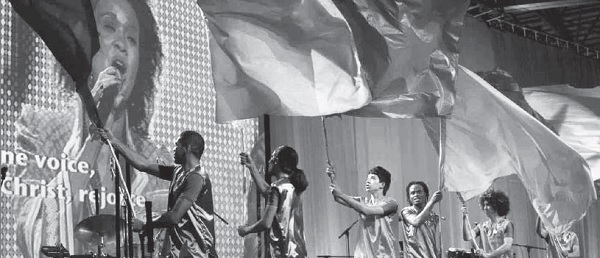
▲The 3rd Lausanne Conference in 2010 was grandly held in Cape Town, Africa.
In 1976, the first Huafu Conference was held in Hong Kong. Since then, it has been held every five years, and missionary work has been carried out in China, Indonesia, South Korea, the Philippines and other Asian countries. I was surprised to find that the proportion of Christians in African countries is as high as 40%, 50% and 60%. The Director General of the South African Bible Society told me that if Catholics are included, the proportion of African believers is even as high as 80%. In every era, God raises up church gospel institutions and believers to bravely face the challenges of that era and assume the missionary mission.

▲Since 1976, the World Chinese Evangelization Conference and special conferences have been held every five years. The picture shows the 2011 promotional materials.
Question: Please briefly describe the development of the Chinese church in the United States?
answer:The Chinese church in the United States can be said to have started in the 1950s. With the assistance of Riverside Church in New York, Chinese students studying in the United States began to establish the Chinese Christian Fellowship, led by Xu Mushi and Tan Tianjun. Since then, Chinese Bible study classes, mainly for international students, have sprung up. Almost every North American university has a Chinese Bible study class. This is a very special phenomenon. Just like the Twin Cities Christian Fellowship in Minnesota in 1958, which later developed into a Chinese church, the pastor was Huang Cunwang.
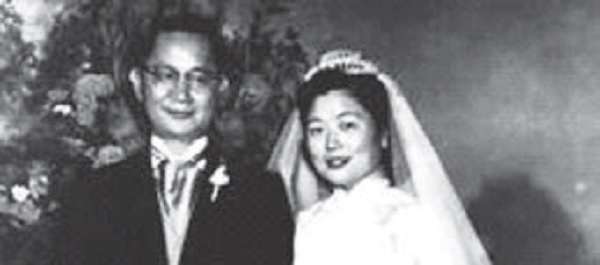
▲In 1950, the first Chinese Bible study class in the United States was established: the New York Chinese Christian Fellowship. The picture shows the leaders of the fellowship, Mr. and Mrs. Xu Mushi and Tan Tianjun.
In the 1960s, the Philadelphia Bible Study Class educated many local international students. Among these people who loved the Lord, Zhao Tianen, Han Wei, Chen Jimin, Lin Cixin, Zhou Gonghe and others later became church leaders. Canada started a Chinese Christian Fellowship in Winnipeg, a wheat-producing area, in 1960. The winter meeting in Winnipeg produced many Christian leaders, such as Cai Yuanyun, Luo Manhua, and Liang Feisheng. The church at that time was generally only concerned with the establishment of the church and focused on the goal of "self-reliance and self-propagation of the church."

▲In 1945, the summer spiritual retreat for Christian students from various universities in China included Bian Yunbo, Teng Jinhui, Chen Zhongdao, Jiao Yuanlian, and other missionary predecessors. The picture shows a group photo of participants in 1945.
As early as 1943, due to the cooperation between China and the United States during World War II, the U.S. Congress finally canceled the Chinese Exclusion Act that had been in place since 1882. In fact, the Chinese church was most affected by the 1965 Immigration Act passed by the U.S. Congress. It was this immigration act that enabled many professional Christians from Taiwan, Hong Kong, and Singapore to obtain the right of residence in the United States, start families, start businesses, and put down roots. It was also because they had a mainstay. and stable co-workers, laying the foundation for church growth and future missions. Since international students have settled down and their parents have immigrated, we cater to the needs of their families and children. Since the 1970s, Bible study classes have gradually transformed from professionals as the main body to an all-round church with three generations in the same class. For example: a five-person Bible study class at San Jose State University in 1968 became Mountain View Christian Synagogue in 1971. In the 1970s, the Bible study class at Ruoge University started with only twenty people. Since the church was established in 1979, Ruoge Church has more than 2,500 members.
The Chinese have always been seen as a disorganized mass, but the Chinese church is very different. They are very united, caring, and enthusiastic about helping others, leaving a wonderful testimony in the Chinese community.
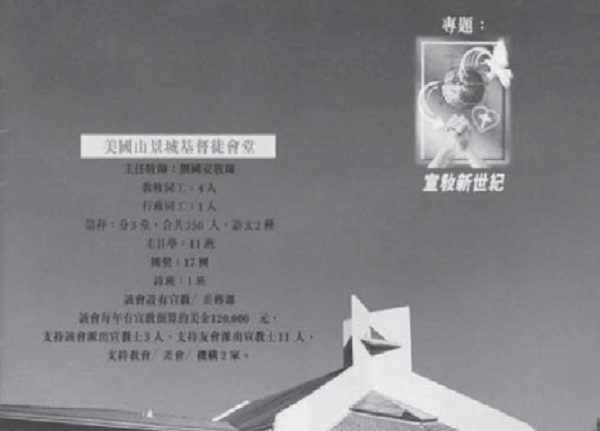
▲In the 1980s, Chinese churches in the United States began to take root and build up (establishing faith consensus, church systems, co-worker equipment, and purchasing and building churches) to welcome the new wave of revival.
In the 1980s, Chinese churches began to take root and build up. The first thing to build is a consensus of faith, a church system, etc. In the past, two or three people decided on Bible study matters, but now pastors, elders, deacons, etc. need to consult with each other. In addition to establishing a church constitution, we also need to carry out elderly ministry, women's ministry, youth ministry, children's ministry, etc. In order to establish an all-round church system, Chinese churches not only have to train co-workers, but also decide on major matters such as purchasing land and building churches. Pastor Tang Youzhi, an authority on the Old Testament, once wrote a book called "The Chinese Church in North America", which recorded the situation at that time and is worth reading.
Question: What influence did the Chinese churches in the United States have on starting missionary work?
answer:The Chinese American Church was gradually established in the 1980s. It was not only built with a solid foundation, but also had God’s long-term plans and purposes. In the early years, Pastor Zheng Guo promoted missionary work in the Philippines, and Pastor Xu Guangdao promoted professionals to participate in missionary work. The Chinese church was also in full swing to evangelize and conduct outreach missions to Chinese compatriots.
In 1983, the first Chinese Missionary Conference was held in Washington, DC, and it was held every three years thereafter. We found that the Chinese American churches at that time had little understanding of missionary work, so we especially taught testimonies about missions, such as the lives of Hudson Taylor and Morrison when they came to China as missionaries. Through the sharing of many heavyweight speakers such as Tang Chongrong, Dai Shaozeng, Ai Deli, Zhou Zhupei, and Li Xiuquan, the congregation's understanding and emphasis on missions was deepened. At the mission conference, we strongly called on the Chinese churches to implement missions and become a new force in world missions.
There were nearly 400 delegates in the first session, and that number increased to 500 or 600 in the second and third sessions. The discussion at that time was very lively. In addition to "should we serve as missionaries full-time or part-time", we also went into depth on issues such as "what is missionary" and "why missionary". The gospel has not yet spread throughout China, so why do we need to do global missionary work? Our church has not yet established a church, so how can we have any spare time to care about missions in other countries?
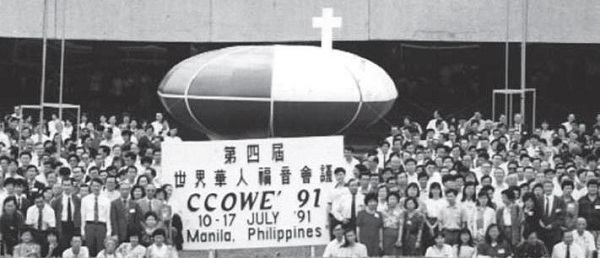
▲The grand scene of the World Chinese Evangelical Conference in 1991.
By the 1990s, mainland Chinese students and scholars at home and abroad were very interested in Christianity and the Bible, and wanted to search for the truth. This was very different from the early years when they were tourists in churches. During this period, Chinese evangelical missionary organizations were established one after another. For example: overseas campuses were established in 1992, the Great Commission Center was established in 1993, the Chinese Evangelization Association was established in 1995, and Life Quarterly was established in 1997.
Later, the United States passed the Protection Act of 1993-1994, adding 80,000 immigration quotas, and people born in China could finally apply for permanent residency. Chinese Christians started families and established churches in the United States, and Chinese students became the main members, co-workers, and leaders of the church. The Chinese church needs to find the direction of outreach and assume its mission, and gradually devote itself to evangelism and missionary work, from sending money to sending people.
According to estimates by Pastor Lin Anguo of "Hua Chuan Road" in 1998, a total of about 200 Chinese missionaries were sent to North America at that time, and later increased to 300, but this number lagged far behind Singapore, Malaysia, Taiwan and Hong Kong. As the domestic political situation gradually opens up, overseas churches have integrated with domestic churches and have frequent contacts. On the other hand, Chinese missionary work also cooperates with Western missions, and many Chinese have become missionaries of Western missions. Through the Lausanne Conference, the Great Commission Center and the 2000 Movement, Pastor Wang Yongxin led the Chinese church to integrate with the mainstream churches in the United States, leaving us a good example.
Q: Looking forward to the next ten years, please share the missionary opportunities for the Chinese churches in the United States.
answer:First, there is the overseas return ministry. The number of Chinese immigrants in the United States continues to increase, and these are the objects of our concern in the next ten years. Now you can immigrate as long as you invest US$500,000. In the past, international students were mainly graduate students and lived in poverty. However, the new generation has come with many young international students who only have high school education. They pay tuition fees of US$20,000 to US$30,000 per year. They are the children of rich people and high-ranking officials. After completing their studies, they return to their home countries for development. According to statistics, the number of "returnees" increases by about 13% every year, and in 2010 it reached 134,800 returnees.
After these international students believed in the Lord, not only did their lives change, but the elders who came to visit relatives or take care of their children and grandchildren often also believed in the Lord. Therefore, we need to equip them to become a vital force in the church. Song Shangjie was an old "returnee from overseas" many years ago. His influence on the Chinese church was indescribable! This vast field is the new challenge for the campus ministry of Chinese churches in the United States in the next ten years. In June 2011, six evangelical organizations met in Chicago to discuss strategies for evangelizing international students on campus and equipping and sending them back to their home countries to win people to the Lord. A patriotic return movement for overseas Chinese Christians has also been launched so that those traveling to and from the mainland to work or visit relatives can receive the best training. We should not let these returned believers fend for themselves there, but should make good use of different channels to continue to encourage and support them.
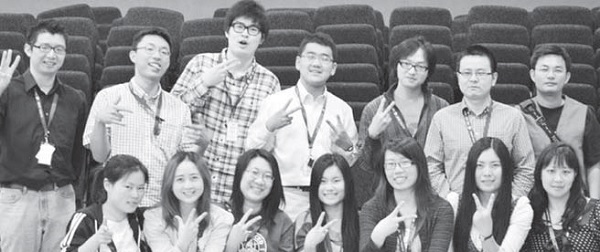
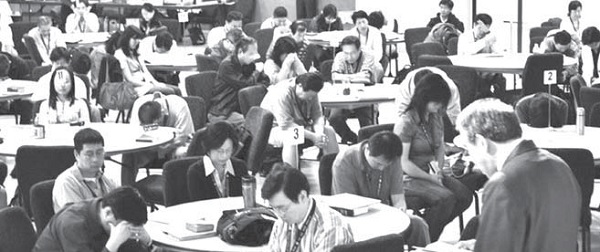
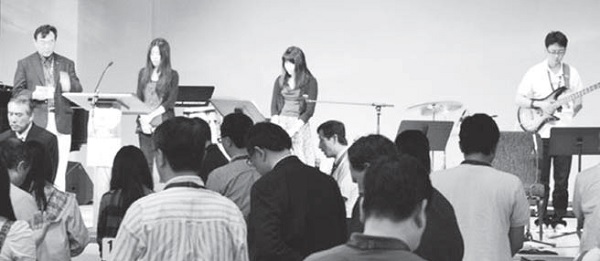
▲A new generation of Chinese students are pouring into the United States. How do the campus ministries of various churches face new challenges?
The picture shows the American and European Chinese Campus Evangelism Strategy Conference in June 2011. Photo provided by: "Liu Mu" issue 51.
In addition, it is an online ministry. Traditional discipleship is physical contact, including accompanying, reading, and nurturing. Now that digital technology networks are booming, young people are keen on the virtual world and use it as a platform. How to make the two methods complement each other and achieve the purpose of preaching the gospel is also a topic that the Chinese church needs to face in the future. According to statistics, there are as many as 500 million "netizens" in China! We are going to make netizens disciples of the Lord.
幾年前,華福舉辦了網路宣教會議,邀請已經投入網路宣教事工的同工們齊聚一堂,討論如何善用這最新科技去傳福音。網絡的福音事工可分為三方面:
1.網路宣教(如:愛嘀咕網、耶穌中心);
2.網路培訓(如:愛問網、好牧人);
3.網路神學教育(如:愛學網、CIU/GCTS中文課程)。香港有一間會友多達數千人的大型教會,牧師每星期都向會友提供靈修教材,甚至可藉由電腦來查出會友是否閱讀哩!
Q: Please share the challenges faced by Chinese churches in the United States and the difficulties that need to be overcome.
answer:First, it is the impact of the economic downturn. In the 2000s, the September 11th incident intensified the economic, social, political, and ethnic crises in the United States. In the 2010s, another global political and economic crisis broke out. These crises have had a strong impact on the United States, and Chinese churches and missionary agencies are not immune. Because believers lost their jobs and had their salaries reduced, the donations received were greatly reduced. How to face this painful dilemma? We can consider reducing repeated meetings and replacing them with Skype; we can consider dividing labor and cooperation and reorganizing resources. I know that dozens of Chinese churches in the Midwestern United States have joined forces for missionary work, concentrating missionary resources on a certain ministry and a certain region.
Secondly, there is the identity of the second-generation Chinese. Second-generation Christians in overseas Chinese churches often face identity problems when attending youth gatherings in English churches. They are considered Second Class Citizens, with only the right to work but no voice. The first-generation Chinese did not understand their ideas, which made them feel that the first-generation Chinese did not understand the rules, but did not abide by them. For example, the mission committee of one church stipulated that those who participate in short-term missions must meet certain qualifications and must first receive training and go out to raise funds, etc. But the first-generation Chinese believe that as long as I contribute my own money, I don’t have to raise funds and break these rules myself.
The third is how to actively integrate into mainstream American groups. Dr. Liu Dafang pointed out that overseas Chinese churches should get out of the subculture and Chinatown patterns and actively integrate into the mainstream groups in the United States. Chinese can join American churches and serve as Sunday school teachers, missionary committee members, elders, deacons, etc. Today, the growth of Chinese churches relies heavily on immigrants. If one day the U.S. economic recession or the government changes its immigration strategy leads to a decrease in immigrants, how should the church respond? Chinese churches can also deemphasize Chinese as members. For example, the "Ruoge Church" in New Jersey later changed its name from "Chinese" to "Community".
Question: What are your expectations for the current Chinese churches and believers?
answer:I would like to use four words of "look" to summarize the expectations for Chinese churches and believers in North America.
The first is to look upward and have the mind of Jesus Christ.That day, when Jesus saw the people suffering and displaced, like sheep without a shepherd, he felt compassion. Today, people in many places around the world are still living in poverty, society is corrupt, and they are still living in dire straits. Faced with global difficulties, wouldn’t the Chinese church take the lead in taking action?
The second is to look inward and sincerely examine your own heart.When Isaiah saw God’s holiness, he first asked God to cleanse his lips, and then he said to God: “Please send me!” David’s prayer in Psalm 139 was asking God to observe him. Likewise, missionary work Have the right motivation.
The third is to look outward and focus on the trends of the times.Chinese churches must seize the opportunity of missionary work and make good use of their expertise and gifts to serve God.
The fourth is to look forward and look up at the glorious harvest scene.When Jesus was on the earth that day, he raised his eyes to look at the fields. Although there were still three months to go until the harvest, He had already seen the glory of the harvest with the eyes of faith. When Morrison came to China to preach, some people also questioned his ability to change ancient China, but he still took steps of faith and held on to the call from God, because "now" is the best time to preach. . Let us all respond to the needs of the times, shoulder our mission and move forward courageously.
 Journalist profile
Journalist profile
Yu Guoliang, born in Guangzhou and raised in Hong Kong, received a PhD in atmospheric physics from the United States. He is the author of "Physicists Read the Bible" (Daosheng Publishing) and "John Code - Decoding of the Da Vinci Code" (Tianen Publishing). His latest book, "The Seven Tribulations of the Cross," will be published by the American Evangelical Witnesses Association.
 Reporter Profile Pastor Zhang Lingxi loves literature and art and has been engaged in multicultural ministry for many years. He has three children and one grandchild each. He currently works at Hospice and is engaged in the care of hospice patients.
Reporter Profile Pastor Zhang Lingxi loves literature and art and has been engaged in multicultural ministry for many years. He has three children and one grandchild each. He currently works at Hospice and is engaged in the care of hospice patients.
